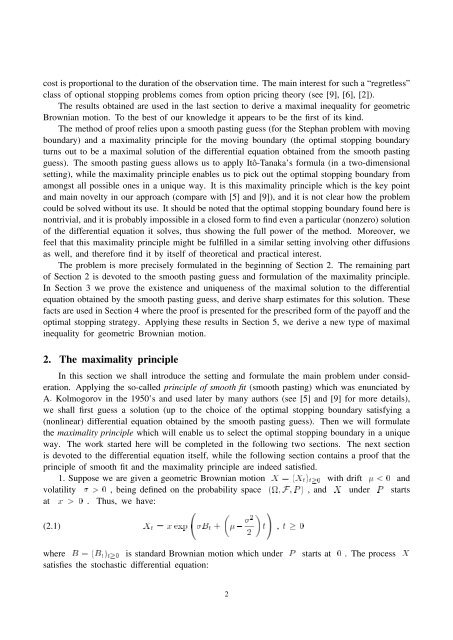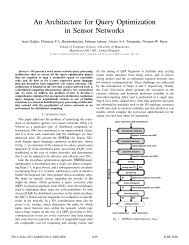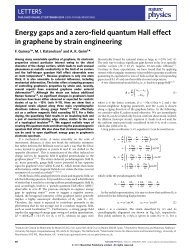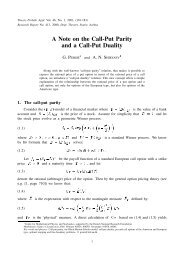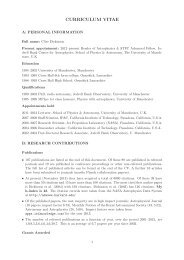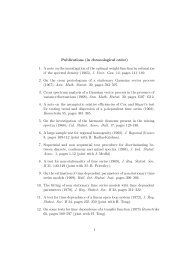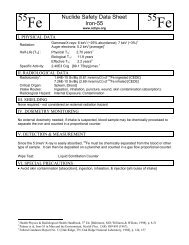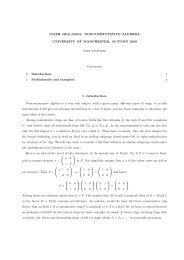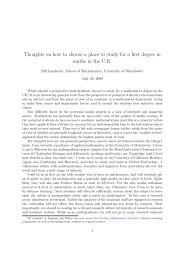inequality for geometric Brownian motion
inequality for geometric Brownian motion
inequality for geometric Brownian motion
You also want an ePaper? Increase the reach of your titles
YUMPU automatically turns print PDFs into web optimized ePapers that Google loves.
cost is proportional to the duration of the observation time. The main interest <strong>for</strong> such a “regretless”class of optional stopping problems comes from option pricing theory (see [9], [6], [2]).The results obtained are used in the last section to derive a maximal <strong>inequality</strong> <strong>for</strong> <strong>geometric</strong><strong>Brownian</strong> <strong>motion</strong>. To the best of our knowledge it appears to be the first of its kind.The method of proof relies upon a smooth pasting guess (<strong>for</strong> the Stephan problem with movingboundary) and a maximality principle <strong>for</strong> the moving boundary (the optimal stopping boundaryturns out to be a maximal solution of the differential equation obtained from the smooth pastingguess). The smooth pasting guess allows us to apply Itô-Tanaka’s <strong>for</strong>mula (in a two-dimensionalsetting), while the maximality principle enables us to pick out the optimal stopping boundary fromamongst all possible ones in a unique way. It is this maximality principle which is the key pointand main novelty in our approach (compare with [5] and [9]), and it is not clear how the problemcould be solved without its use. It should be noted that the optimal stopping boundary found here isnontrivial, and it is probably impossible in a closed <strong>for</strong>m to find even a particular (nonzero) solutionof the differential equation it solves, thus showing the full power of the method. Moreover, wefeel that this maximality principle might be fulfilled in a similar setting involving other diffusionsas well, and there<strong>for</strong>e find it by itself of theoretical and practical interest.The problem is more precisely <strong>for</strong>mulated in the beginning of Section 2. The remaining partof Section 2 is devoted to the smooth pasting guess and <strong>for</strong>mulation of the maximality principle.In Section 3 we prove the existence and uniqueness of the maximal solution to the differentialequation obtained by the smooth pasting guess, and derive sharp estimates <strong>for</strong> this solution. Thesefacts are used in Section 4 where the proof is presented <strong>for</strong> the prescribed <strong>for</strong>m of the payoff and theoptimal stopping strategy. Applying these results in Section 5, we derive a new type of maximal<strong>inequality</strong> <strong>for</strong> <strong>geometric</strong> <strong>Brownian</strong> <strong>motion</strong>.2. The maximality principleIn this section we shall introduce the setting and <strong>for</strong>mulate the main problem under consideration.Applying the so-called principle of smooth fit (smooth pasting) which was enunciated byA: Kolmogorov in the 1950’s and used later by many authors (see [5] and [9] <strong>for</strong> more details),we shall first guess a solution (up to the choice of the optimal stopping boundary satisfying a(nonlinear) differential equation obtained by the smooth pasting guess). Then we will <strong>for</strong>mulatethe maximality principle which will enable us to select the optimal stopping boundary in a uniqueway. The work started here will be completed in the following two sections. The next sectionis devoted to the differential equation itself, while the following section contains a proof that theprinciple of smooth fit and the maximality principle are indeed satisfied.1. Suppose we are given a <strong>geometric</strong> <strong>Brownian</strong> <strong>motion</strong> X = (X t ) t0 with drift < 0 andvolatility > 0 , being defined on the probability space (;F; P ) , and X under P startsat x > 0 . Thus, we have:(2.1) X t = x exp B t +0 22t!, t 0where B = (B t ) t0 is standard <strong>Brownian</strong> <strong>motion</strong> which under P starts at 0 . The process Xsatisfies the stochastic differential equation:2


